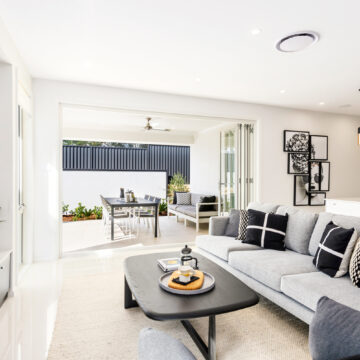A beautiful and environmentally friendly choice for your building’s outside walls is timber cladding. It is being used more frequently by architects and builders to improve, preserve, and insulate the exterior of their construction projects.
Timber cladding contributes more than just a stylish aspect to contemporary inside-outside projects, industrial or educational construction, and more. It is a prominent construction option for a reason since it offers a number of excellent advantages and is environmentally friendly.
What Is the Main Function of Timber Cladding?
Timber cladding functions as the exterior “skin” of a structure. It serves as a second layer of defense over the elements of the structure. It can significantly enhance the aesthetics of any building due to its overall look. For aesthetic reasons, it can also be applied to ceilings.
In order to create a protective layer on a wall, boards that overhang one another are used in cladding. The idea is similar to that of roof shingles. The wall that the cladding is protecting has a little opening put into it. This enables any interior moisture to either drain out or evaporate.
Why Do You Need Timber Cladding Over Other Materials?
Timber cladding is lightweight and flexible. In some buildings, it is a cheaper option because it doesn’t require any additional support. It can be supported by the columns, piers, and posts that make up the building.
Timber has an unmatched aesthetic. It gives buildings a thriving, organic aspect and aids in their integration into the landscape. It comes in a wide range of finishes, hues, and textures. Additionally, wood acts as a natural insulator. It lowers the price of heating and cooling.
Various Types of Timber Cladding
Canadian Western Red Cedar
It is a tough wood that comes from North America or Canada. It is a naturally highly resistant and durable wood; however, it can be covered with an oil treatment to keep its look.
Siberian Larch
Another type of timber cladding, it has a naturally mediocre level of durability. Compared to its British counterpart, larch that occurs in Siberia or other slow-growing locations will do better. Siberian Larch is considered more impact resistant than Western Red Cedar because of its average density.
European Oak
This timber is durable. Given its propensity to warp, oak is typically a costly type of timber cladding and requires careful specification. Shorter dimensions and attaching with screws via pre-drilled holes are suggested for oak timber cladding. The price of installing oak timber cladding may go up as a result of this process.
Additional preservatives are needed for timber cladding made of spruce, fir, and pine. A pressure impregnation of chemicals having preservation qualities, such as those used in our Brunnea or Lite processes, is typically how this treatment is applied.
Thermally altering timber cladding is another method for keeping it in good condition. This is accomplished by carefully heating the wood to a temperature of above 200°C. The timber’s stability and resilience will be increased by this treatment.
4 Factors to Take Into Account Before Installing Timber Cladding
The effectiveness and appearance of a structure are significantly impacted by how timber cladding is erected. To avoid ugly and expensive mistakes, you must choose the proper timber species and fasteners for your project. You should also ensure proper detailing and ventilation.
1. Sufficient Ventilation
When it comes to timber cladding, ventilation is crucial and needs to be a top priority. By enabling the lumber to swiftly and entirely dry out in between wet cycles, a well-ventilated construction boosts the cladding’s endurance. On the opposite side, inadequately ventilated boards may cup, swell, twist, or push against one another, causing the boards to elevate and eventually disintegrate.
Utilising ventilation strips that set the cladding boards from the backing hardwood battens creates a vented gap between the timber pieces, achieving optimal ventilation and reducing the possibility of moisture accumulation. Additionally, it takes into account some movement to prevent screw fixes from cracking under pressure.
2. Choice of Species
The suitable species for your work is crucial because timber cladding comes in a variety of species and profiles, each with unique aesthetic and physical characteristics. To aid you with your decision, start by questioning yourself a few questions.
Do you prefer a rustic look or sharp, clear lines? Do you favour a colourful finish or a more natural appearance? Which will look better, horizontal or vertical boards? It’s simpler to limit your options if you know the aesthetic you want to accomplish.
3. Support Mechanism
Since we can only view the outer portions of the cladding, it is simple to concentrate only on those, but it is equally important to take into account the interior. Hardwood battens substructure, which is frequently manufactured from low-grade, preservative-treated timbers, is used to attach timber cladding to a building.
4. The Significance of Detailing
The corner and door or window can be decorated in a variety of ways. To ensure the endurance, functionality, and aesthetics of the wood, it is crucial to make the proper choice. This is typically established during the design phase since the details you select must allow for quick drying of your boards’ end grain.
The “Mitre Joint,” which involves cutting the boards at a 45-degree angle to create a lovely flush finished finish, is a popular option for corner detailing. The use of posts with square edges is another method for obtaining tidy corners.
















